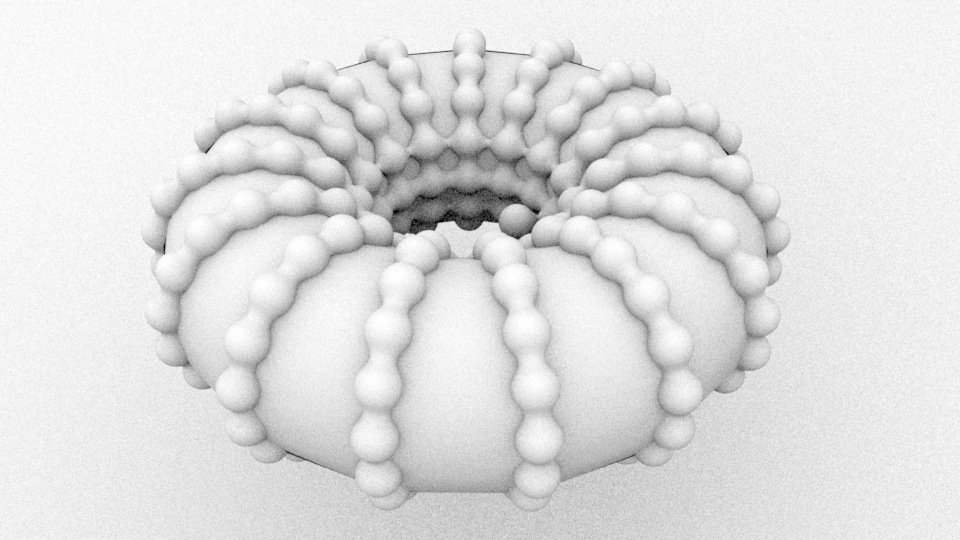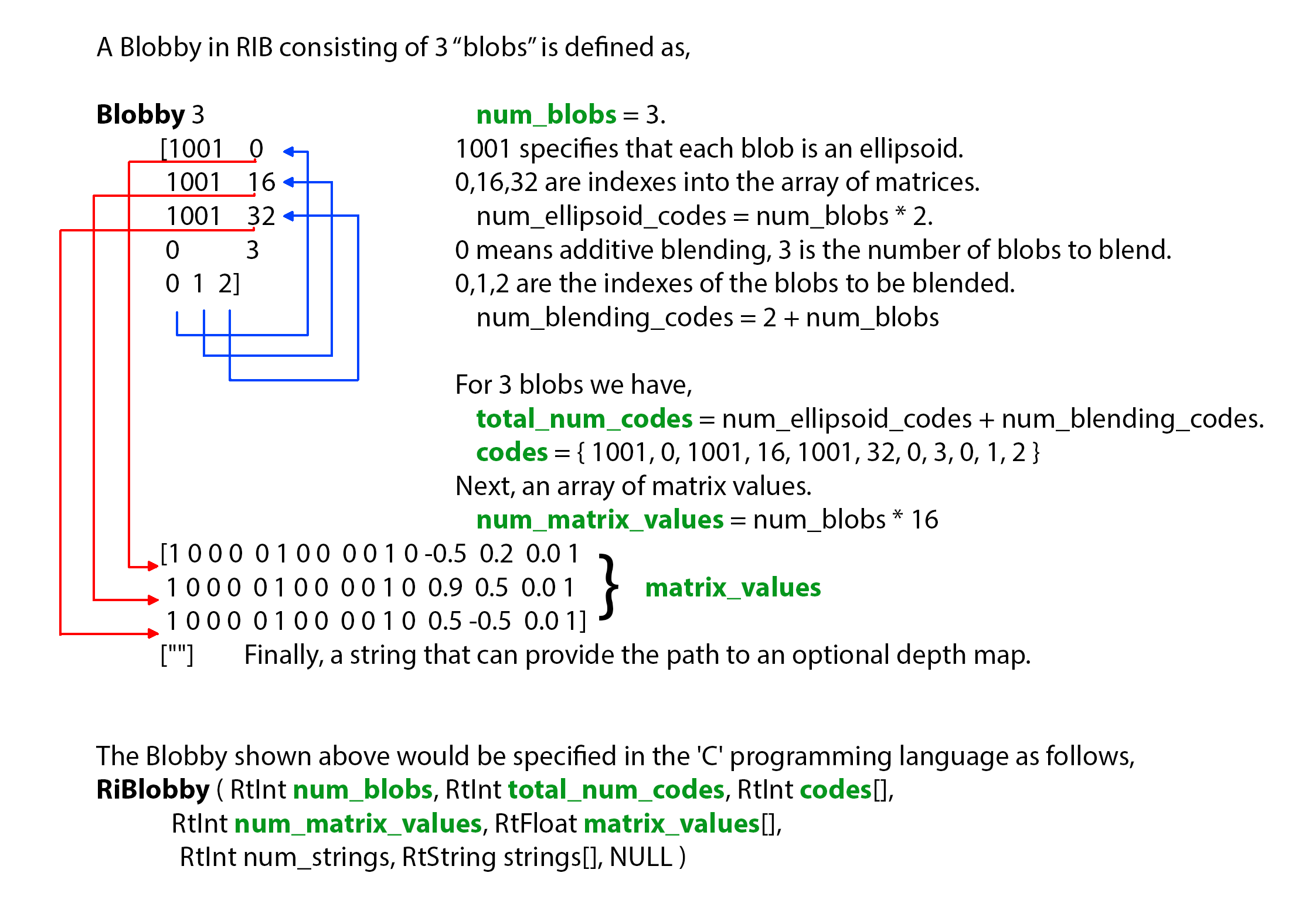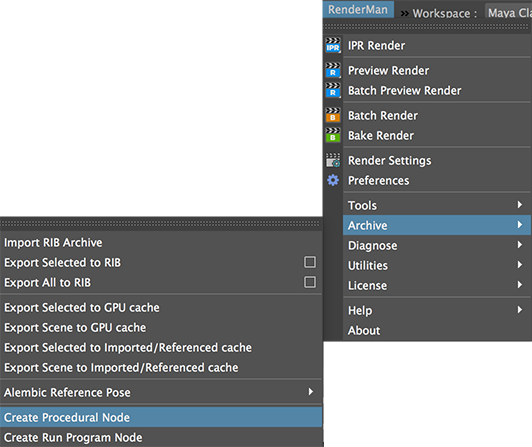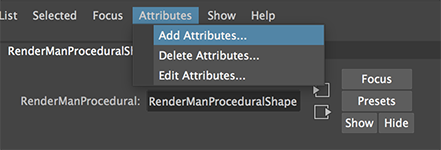Introduction
This tutorial provides an explanation of how a Blobby, generated by a procedural primitive
written in C, can be rendered so that its individual "blobs" are located at the vertices of a
polymesh. The reader should review the following tutorials,
C++ Development Environment
Procedural Primitives: Getting Started
Procedural Primitives: Adding an Interface

Figure 1 (rollover)
How is a Blobby Specified?
In RIB a Blobby consisting of 3 blobs would be specified as follows,
Blobby 3
[1001 0
1001 16
1001 32
0 3 0 1 2]
[1 0 0 0 0 1 0 0 0 0 1 0 -0.5 0.2 0.0 1
1 0 0 0 0 1 0 0 0 0 1 0 0.9 0.5 0.0 1
1 0 0 0 0 1 0 0 0 0 1 0 0.5 -0.5 0.0 1]
[""]
In the 'C' language a Blobby is specified as.
RiBlobby ( RtInt num_blobs, RtInt total_num_codes, RtInt codes[],
RtInt num_matrix_values, RtFloat matrix_values[],
RtInt num_strings, RtString strings[], NULL);
The diagram shown below, figure 2, illustrates the relationship between the sample values of the RIB version of a Blobby and their use with RiBlobby function.





